COMMENT | Almost immediately after the election results, questions have turned to ethnic voting patterns. Ethnicity is deeply entrenched in the understanding and mobilisation of Malaysian politics.
The six state election results confirm a continued pattern of ethnic polarisation in Malaysia. In fact, the ethnic divide is deepening, making the challenge of governing a divided nation harder.
Caveats and methodology
This second piece on the state elections is a preliminary analysis of state election results by ethnic voting.
Of all the socio-economic factors illustrating differences in voting, ethnicity is the most important, accounting for around 40 percent of voting determined from the statistical method of factor analysis I conducted on the 15th general election.
This election, I expect when the final analysis is done, we will see a similar significance, with ethnicity as not dominant but the most important social divide in voting.
This is to emphasise that ethnicity only helps us understand part of how Malaysians are voting and, as has been argued in my analytical GE15 pieces, does little to explain what it is about ethnicity that is shaping voting.
We still do not properly understand what is it about being Chinese, Indian or Malay that influences voting. Scholars identify a range of issues from religion, education to social conditions.
This is a research area in need of more work, as the understanding of Malaysia’s changing society needs more depth.
My research also shows that other cleavages - class, age, gender and urbanisation - help explain variation in voting. Future analysis will feature these factors, as well as other dynamics from the ground.
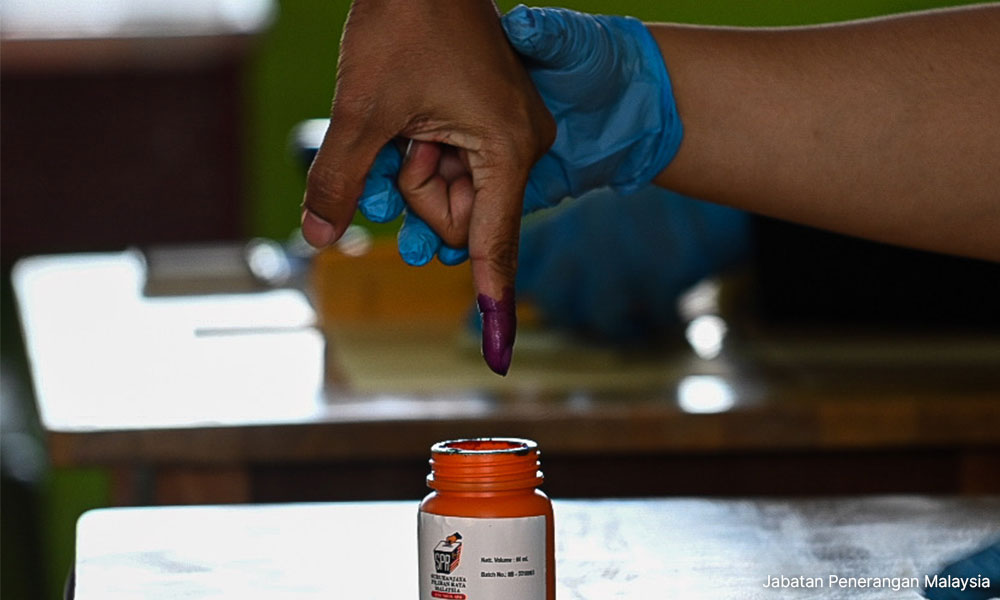
We know the way people vote is a complex issue, not easily simplified. At best, ethnicity and other social cleavages help us understand and seek responses.
We also need to recognise the limits of the methodology to understand ethnic voting patterns. The method used is ecological inference, which estimates voting through the comparison of different group units.
Statistics estimates allow us to see trends, but they should be seen in association with other studies that use surveys, focus groups and panel studies that look at the individual rather than group level.
Finally, there are the constraints of the data. This preliminary analysis is based on the macro seat results, not the more detailed micro polling station and “saluran” results which provide more data points and rigour for making estimates.
Further analysis using more granular data will follow once the data is available which will increase the reliability of the findings.
Please note that for this preliminary analysis, I only consider the three groups: Malays, Chinese and Indians (excluding others) as there are enough points of variation in the group data in the 245 seats to make statistical estimations.
For Indians, the analysis is based on only three states - Negeri Sembilan, Penang and Selangor - as this is where there is a larger sample to conduct the analysis with statistical confidence.
Estimated turnout by ethnicity
The analysis looks at both turnout and support patterns. Here are the preliminary findings for turnout:
Estimated turnout dropped across communities, which is in line with the overall turnout drop from GE15 to the state polls from 79 percent to 70 percent, a drop of nine percent.
As has been the pattern historically, Malays had the highest estimated turnout at 80 percent, with Indians at an estimated 69 percent and Chinese at an estimated 65 percent.
Traditionally, the Chinese have the lowest turnout, but the drop in the state polls suggests particularly low enthusiasm for electoral options.
Indians had the reported largest drop from GE15, an estimated 15 percent. This decline similarly echoes concerns among Indians about the electoral choices, and, as noted below, a broader shift in Indian voting this election compared to GE15.
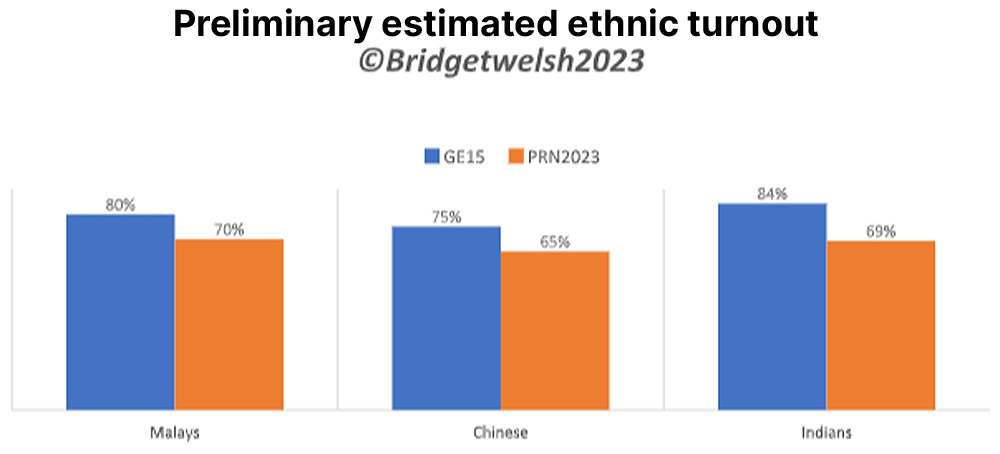
*Note: Indian estimates were drawn only from Selangor, Penang and Negeri Sembilan due to the small size of the Indian population in Kelantan and Terengganu and inadequate data points for reliable analysis in Kedah.
Estimated Malay support
The opposition Perikatan Nasional electoral gains were made from increased Malay support. The popular vote for PN reached 49 percent of the total vote in the six state polls, almost on par with the vote of the unity government. PN increased their seats, gaining 61 seats out of 245, especially in Malay majority areas.
The preliminary analysis confirms that the opposition coalition won over the overwhelming majority of Malays voting, an estimated gain of 19 percent, to reach an average in all six elections of an estimated 73 percent of the Malay vote.
PN’s gains in the Malay vote are uneven across the different states, highest in Kedah and lowest in Negeri Sembilan, where Umno still won 14 seats (most with small margins) and, together with Harapan, gaining an estimated 43 percent of the Malay vote.
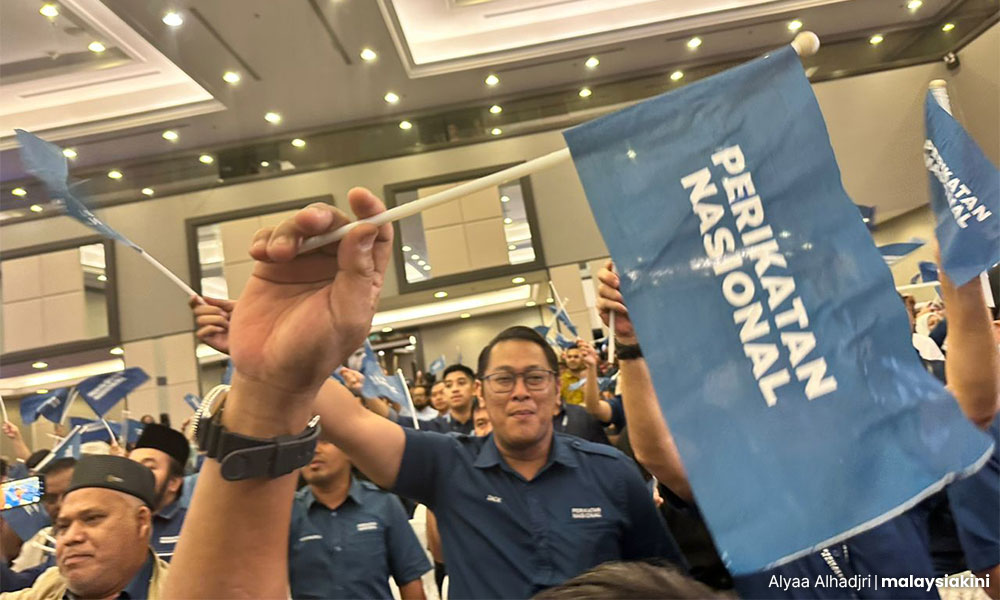
The largest gain for PN among Malays was in Negeri Sembilan followed by Selangor, the least in Terengganu, where support levels for the opposition coalition were already high.

For Pakatan Harapan and Umno, the share of the Malay vote decreased to an overall figure of an estimated 26 percent in the six elections, a figure in line with the Malay vote received for Harapan in 2018.
Estimated Chinese and Indian support
While PN won the Malays, it failed to make meaningful gains among the Chinese and Indian Malaysians. Harapan continued to win the overwhelming political support of non-Malays, highlighting the political polarisation across ethnicity.
The support among the Chinese essentially remained the same as that of GE15, with the important difference in that fewer Chinese turned out to vote. The support of the Chinese who voted for the unity government reached an estimated 96 percent in all six states.
There was no meaningful variation across states, with only a lower level of support from Chinese in Kelantan at an estimated 88 percent where more Chinese supported the PAS government.
However, this was not the case in Terengganu with an estimated 98 percent of Chinese support for the unity government. PN won only an estimated meagre three percent of Chinese support, up three percent from GE15.
The pattern for Indian voters showed more change compared to the last general election. The issue of the swing among Indian voters was highlighted in one of my pieces in the prelude to the polls.
Indian issues resonated in the state polls campaigns. Concerns about the treatment of Indian leaders and responses to racial quotas in the campaign by Harapan impacted the ground.
In the three states of Negeri Sembilan, Penang and Selangor, Indian support dropped for the unity government (both Harapan and BN) by an estimated 21 percent, 19 percent and 12 percent, respectively.
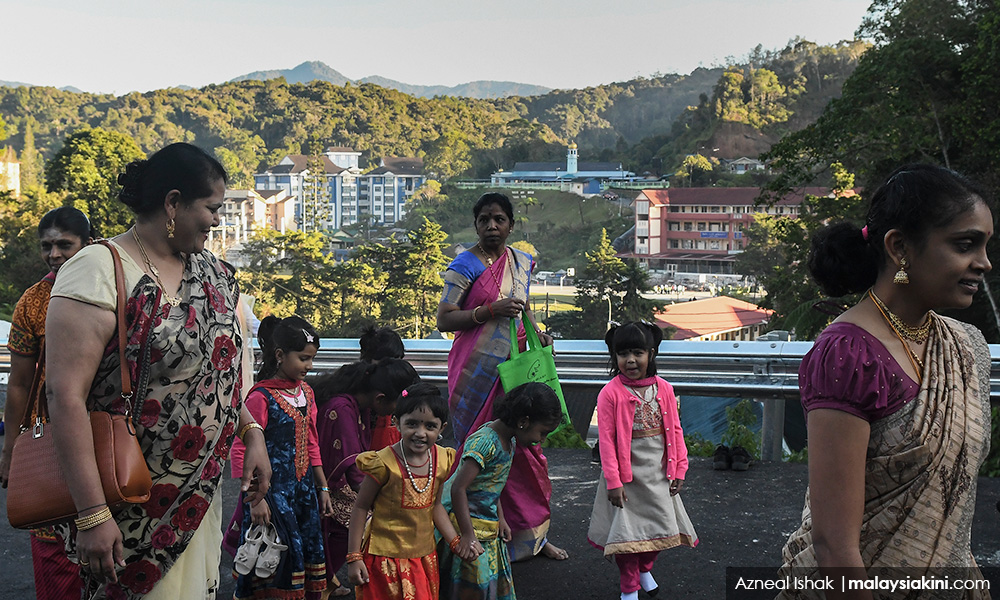
MIC did not contest in the state polls and its influence was felt, contributing to the decline in the Indian vote.
In Penang, Harapan support alone (excluding that for BN) among Indian voters dropped by an estimated 17 percent, highlighting that the mishandling of the dropping of Indian leaders in Penang had an impact on the ground, almost one-fifth of Indian voters.
When combined with the highest drop in turnout of all the communities, there clearly was higher dissatisfaction among Indian voters with the unity government. PN, on its part, won an estimated 29 percent of the Indian vote in Penang, the highest in the six states.
This was followed by Negeri Sembilan at an estimated 19 percent and Selangor at an estimated 14 percent. While still a minority in overall support from Indians, these gains are a marked increase for PN compared to GE15.
My preliminary analysis shows that a not insignificant share of the Indian vote swung away from the unity government, while Anwar Ibrahim’s government maintained an overwhelming majority of Indian support.
The swing speaks to the need to address how leaders and students are treated by parties/leaders and, more importantly, calls for better engagement and policies to address the specific challenges the minority Indian community faces by both state and federal governments.
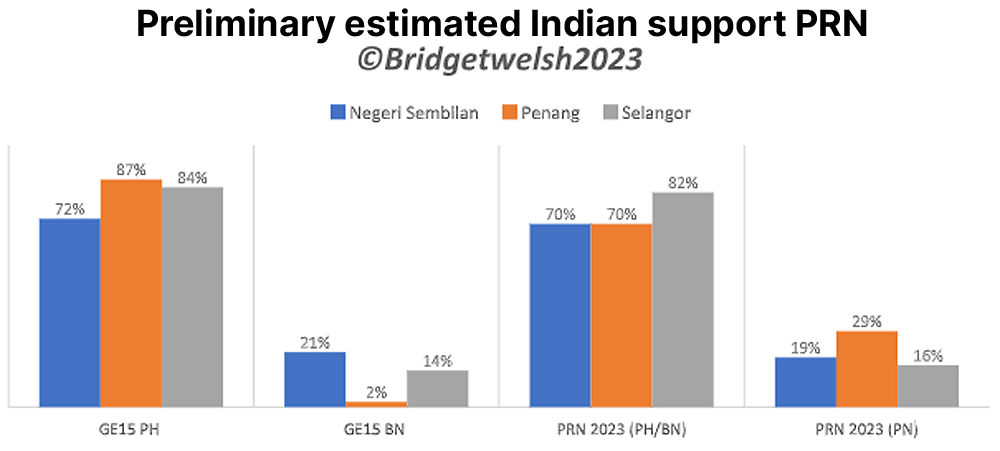
A polarised electorate
The findings show that the polarised ethnic voting patterns remain entrenched and arguably have widened further in these state polls, given the scope of the Malay vote swing for PN.
A subsequent piece will look at the crossover vote, and changes in support from one coalition to another. Harapan’s vote share in the state polls parallels what it was in GE14 (Malay ethnic vote), so the study of how votes shifted will offer insights into how the changes in support are evolving.
Ethnic voting shows, however, that Malaysia is politically and ethnically divided. Both the unity government and PN have deficits of support among different communities. PN has increased its support modestly among Indians, but it essentially remains a coalition of support of one community.
Anwar’s unity government has broader support across all of Malaysia’s communities, although its deficit of support in the Malay community has widened.
PN’s continued use of racialised mobilisation in its campaigning has had the most impact among Malays in this state election, ethnically and worryingly dividing the country further.
Similarly, Harapan’s reliance on mobilising non-Malays to fear the opposition also mobilises emotional ethnic sentiments. The impact of ethnic mobilisation is clearly evident in the results.
These ethnic voting findings point to a serious concern for national unity in Malaysia. The toxicity of public remarks interpreting the state poll results, demeaning groups across races, is all too present in social messaging to the talk in coffee shops.
Similarly, the destabilising comments of legitimacy to rule based on the support of one group are dangerously divisive.
Despite polemics to the contrary, Malaysia is a multiethnic and democratic country, and its government is decided based on the support of all groups through elections.
The state results show, however, that the political divisions are deep and the need for meaningful action to strengthen national unity is more pressing than ever.
READ MORE: Half cup vote? Reflections on state polls outcome: Part 1
BRIDGET WELSH is an honourary research associate of the University of Nottingham’s Asia Research Institute, a senior research associate at Hu Fu Center for East Asia Democratic Studies, and a senior associate fellow at The Habibie Centre. Her writings can be found at bridgetwelsh.com.
The views expressed here are those of the author/contributor and do not necessarily represent the views of Malaysiakini.

